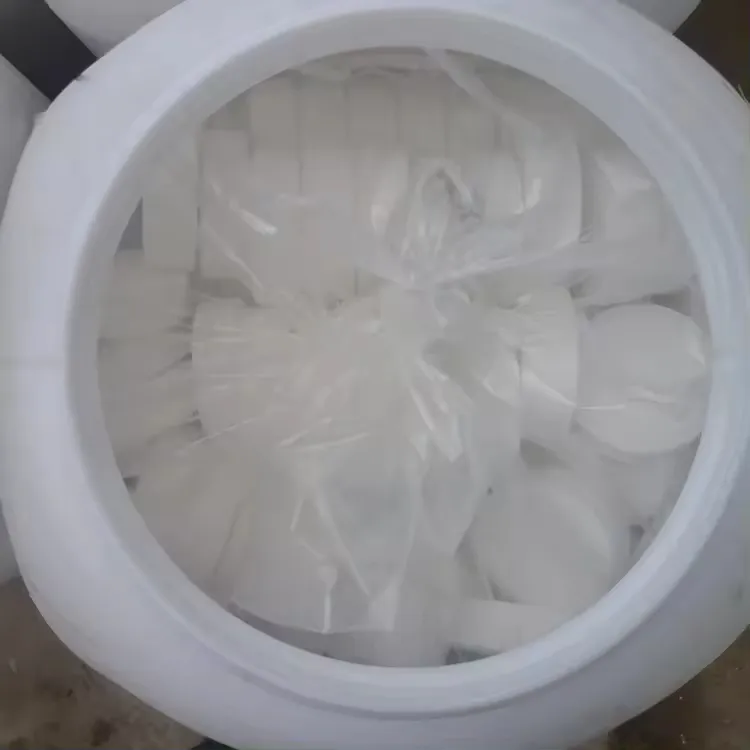



polyacrylamide sds
Understanding Polyacrylamide and SDS The Key to Biomolecular Separation Techniques
Polyacrylamide gel electrophoresis (PAGE) is a commonly used technique in biochemistry and molecular biology for the separation of proteins, nucleic acids, and other biomolecules. At the core of this method lies polyacrylamide, a synthetic polymer that offers unique properties beneficial for resolving biomolecular mixtures. When combined with sodium dodecyl sulfate (SDS), a surfactant also known as a detergent, it enhances the effectiveness of the separation process. This article explores the principles of polyacrylamide and SDS, their roles in electrophoresis, and their importance in biochemical research.
The Chemistry of Polyacrylamide
Polyacrylamide is formed through the polymerization of acrylamide monomers. The resulting polymer can be altered in terms of concentration, pore size, and cross-linking, allowing researchers to customize the gel for specific applications. For instance, changing the percentage of polyacrylamide in the gel can affect the separation of different proteins based on their size. Lower concentration gels are preferred for separating larger proteins, while higher concentration gels provide better resolution for smaller proteins.
Polyacrylamide gels are non-toxic and stable, making them suitable for biomolecular applications. Additionally, they have a high capacity for water, which helps to maintain the optimal environment for biomolecules during electrophoresis. This hydrophilicity of the gel allows for a unique balance between resolution and speed, contributing to the overall effectiveness of PAGE.
Role of SDS in Electrophoresis
Sodium dodecyl sulfate (SDS) is an anionic detergent that plays a critical role in SDS-PAGE, a variant of PAGE. The primary function of SDS is to denature proteins, disrupting their secondary and tertiary structures. This denaturation process ensures that proteins are unfolded into linear chains, thus allowing them to migrate through the polyacrylamide gel based on their molecular weight rather than their shape or charge.
SDS binds to proteins in a generally uniform manner, imparting a negative charge proportional to the protein's length. This consistent negative charge ensures that proteins will move toward the positive electrode during electrophoresis. The rate of migration through the gel is therefore inversely related to the molecular weight of the protein; smaller proteins migrate faster than larger ones. This principle allows researchers to estimate the molecular weight of unknown proteins by comparing their migration distance to that of standard proteins of known sizes.
Applications in Research
polyacrylamide sds

The combination of polyacrylamide and SDS has revolutionized protein analysis and characterization. SDS-PAGE is widely employed in various fields, including
1. Protein Purification SDS-PAGE allows researchers to assess the purity of protein samples. By comparing the intensity of bands on a gel, they can evaluate whether target proteins are free from contaminants.
2. Molecular Weight Determination The technique provides an effective means to estimate the molecular weight of proteins, essential for understanding protein structure and function.
3. Western Blotting Following SDS-PAGE, proteins can be transferred onto membranes for further analysis using antibody-based assays. This approach is crucial for identifying specific proteins in complex mixtures.
4. Genetic Studies SDS-PAGE is used in the analysis of recombinant proteins and the evaluation of genetic modifications, enabling researchers to track changes in protein expression levels.
Optimization of Polyacrylamide and SDS Conditions
To achieve optimal separation results, researchers must carefully consider various factors when preparing polyacrylamide gels and conducting SDS-PAGE. These include the gel concentration, buffer system, sample preparation, and running conditions such as voltage and temperature. Customizing these parameters based on the specific proteins of interest ensures high-resolution separations and reproducibility of results.
Conclusion
Polyacrylamide and SDS are fundamental components in the toolbox of modern biochemistry and molecular biology. Their ability to facilitate effective protein separation and analysis has made them indispensable for researchers. As advancements in gel technology and electrophoresis techniques continue to evolve, the adaptability of polyacrylamide and the functionality of SDS will remain central to the progress of biomolecular research. Understanding these components is essential for anyone engaged in the analysis of proteins or nucleic acids, providing a basis for further exploration in the molecular biosciences.
-
Why Sodium Persulfate Is Everywhere NowNewsJul.07,2025
-
Why Polyacrylamide Is in High DemandNewsJul.07,2025
-
Understanding Paint Chemicals and Their ApplicationsNewsJul.07,2025
-
Smart Use Of Mining ChemicalsNewsJul.07,2025
-
Practical Uses of Potassium MonopersulfateNewsJul.07,2025
-
Agrochemicals In Real FarmingNewsJul.07,2025
-
Sodium Chlorite Hot UsesNewsJul.01,2025










